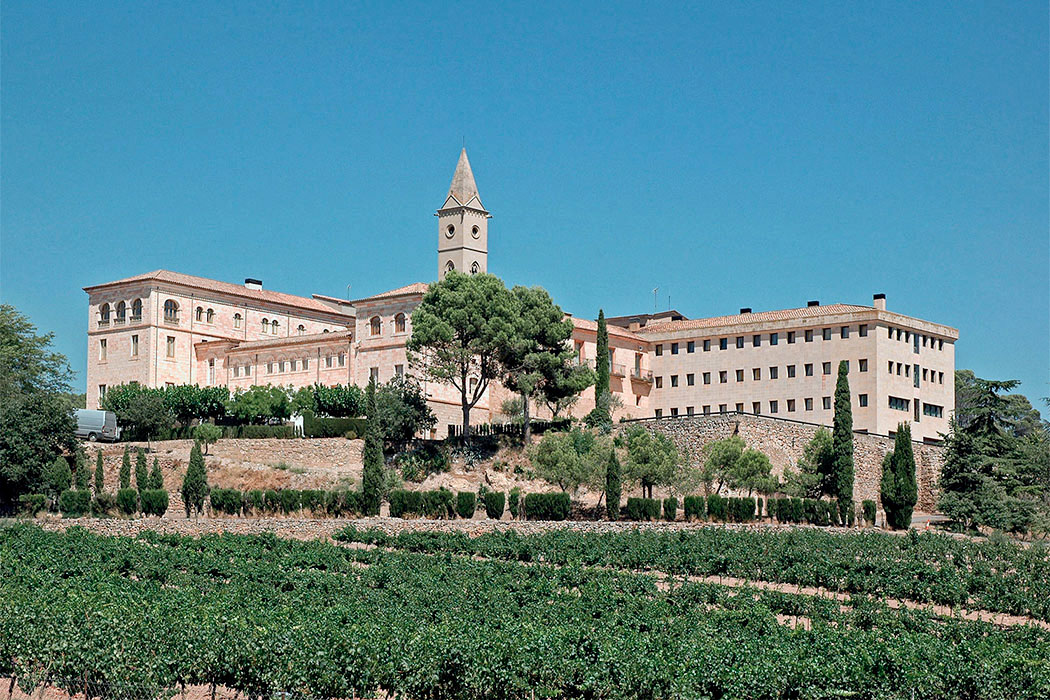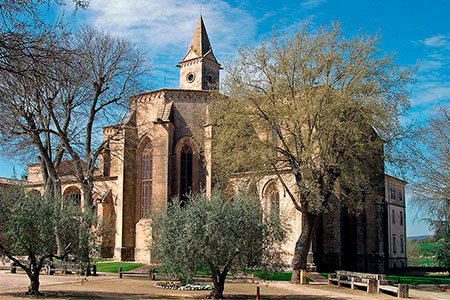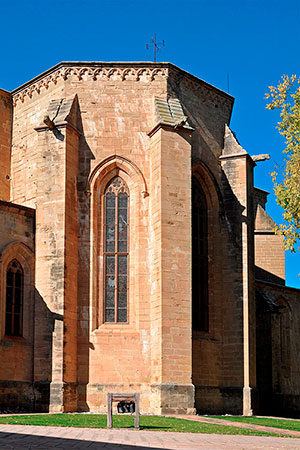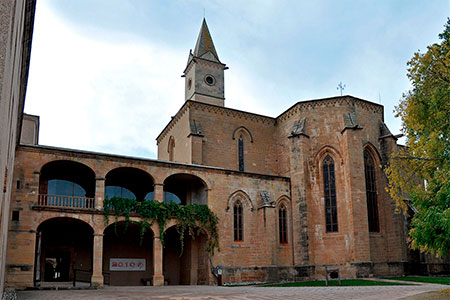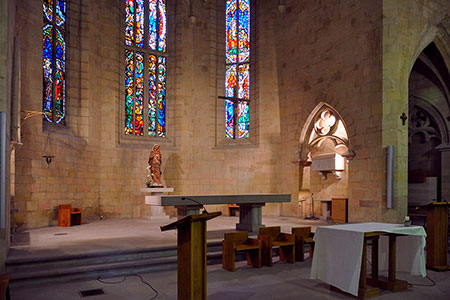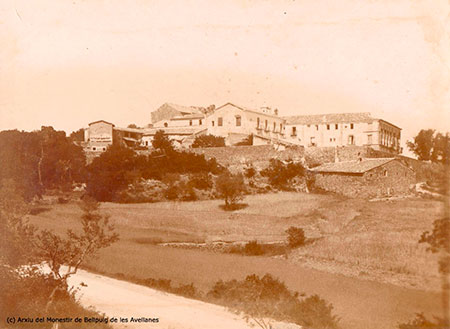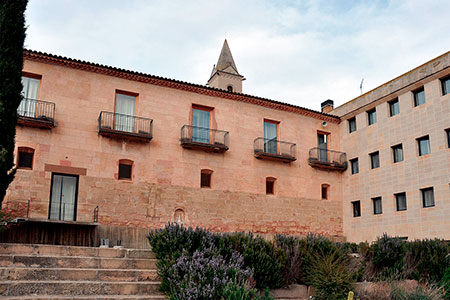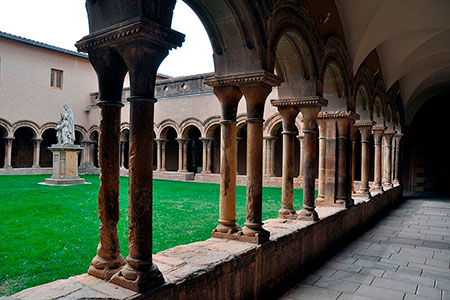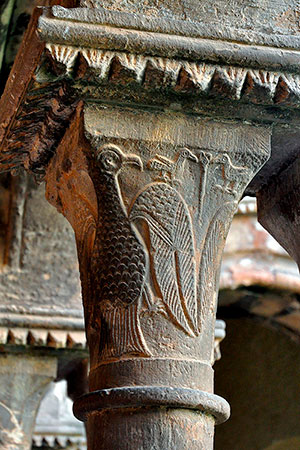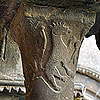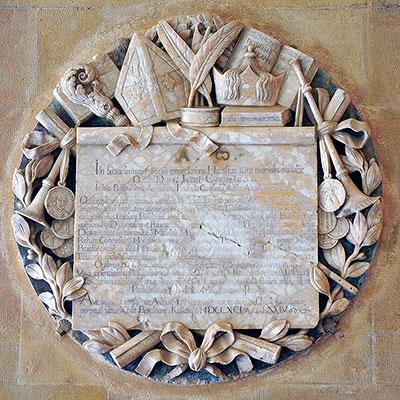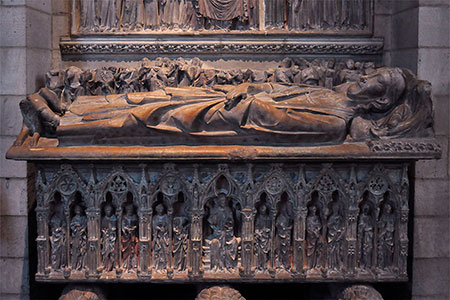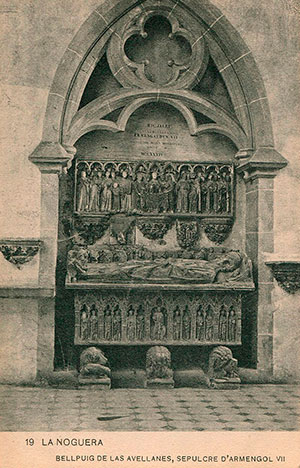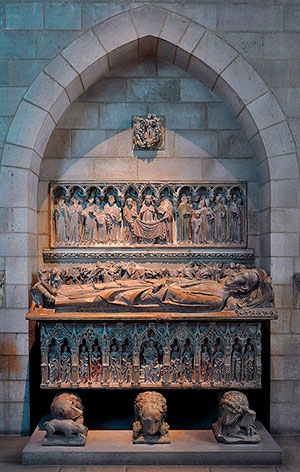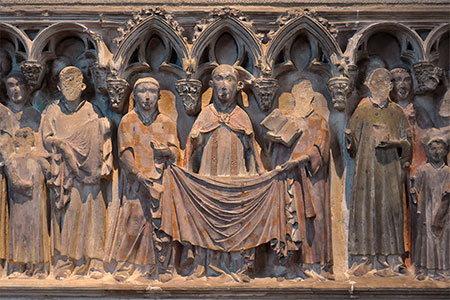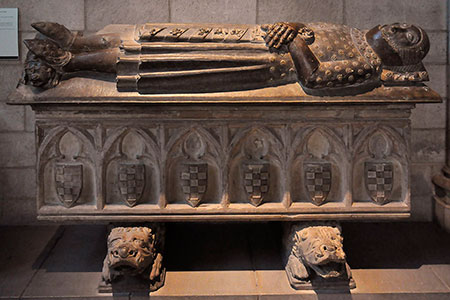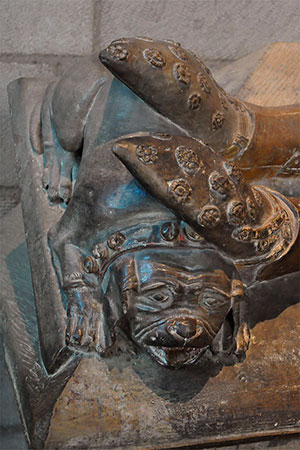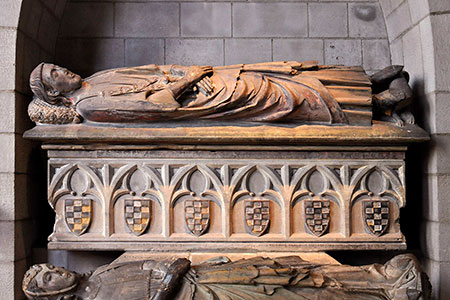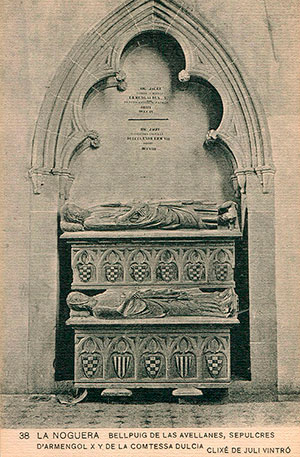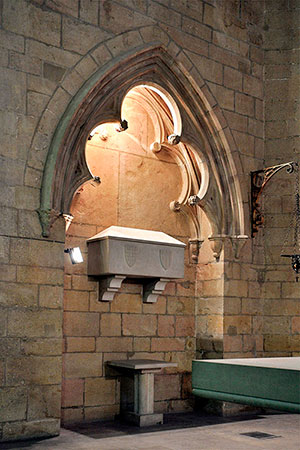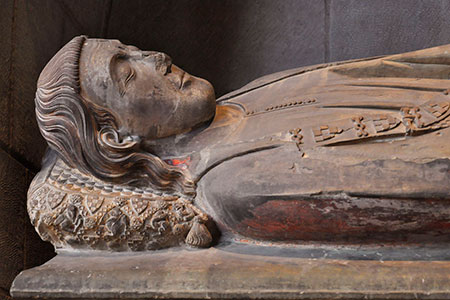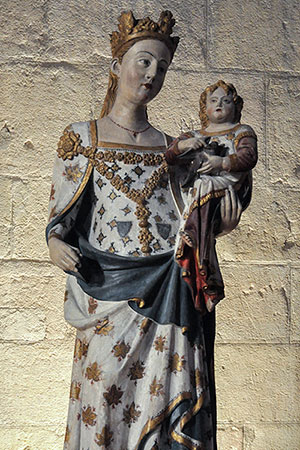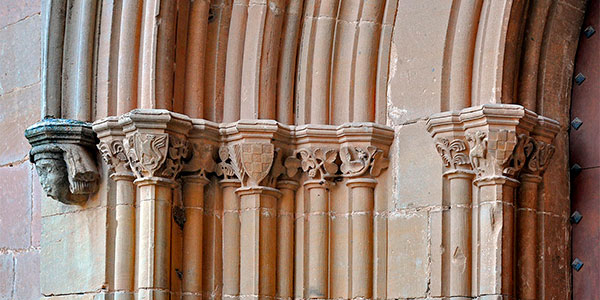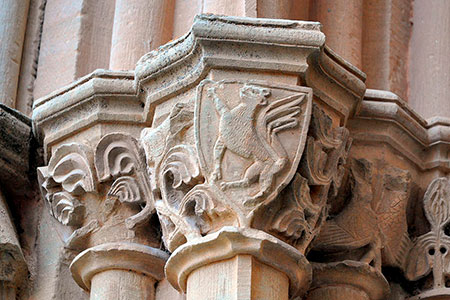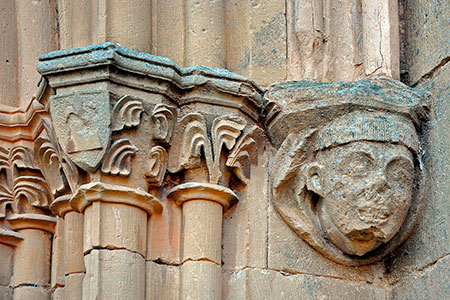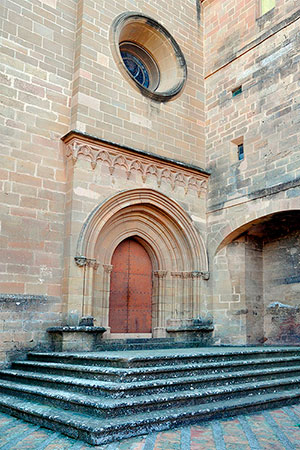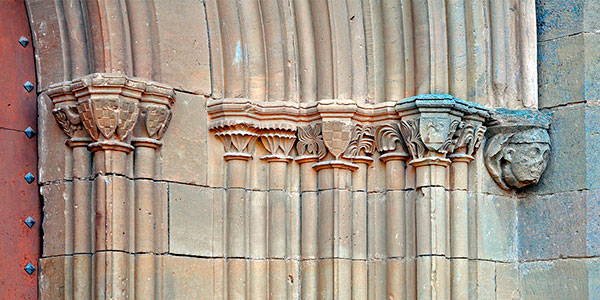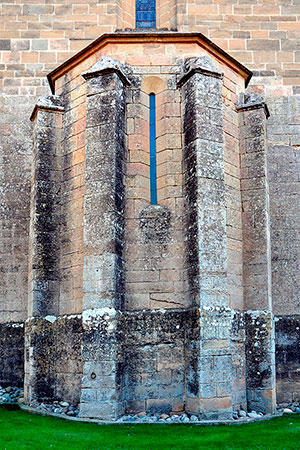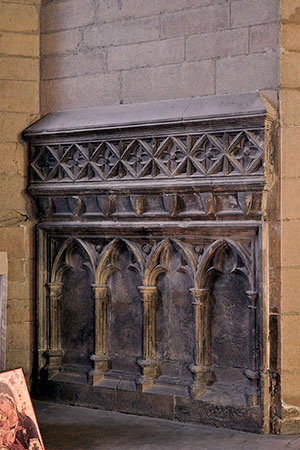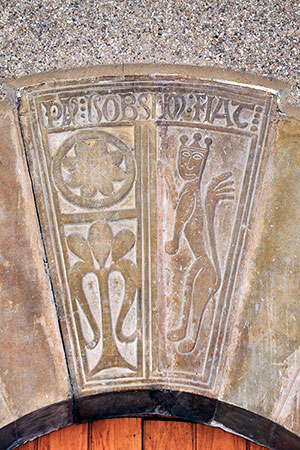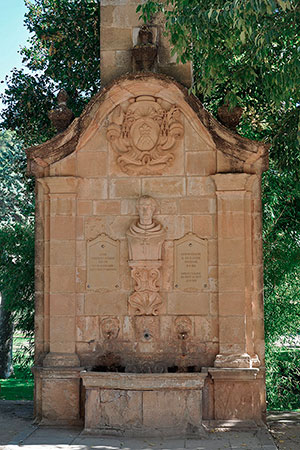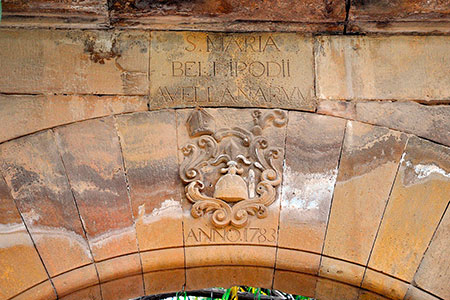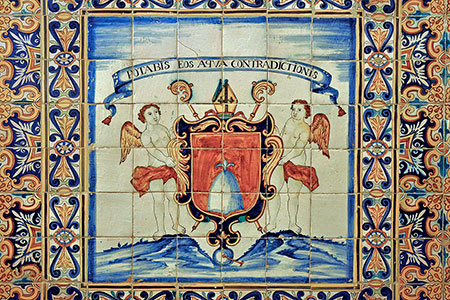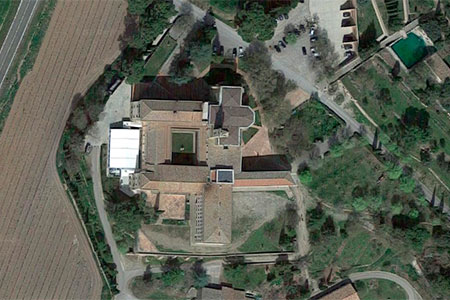Monastery of Bellpuig de les Avellanes
Santa Maria de Bellpuig / Bellipodio / Bellpuig Nou / Fonts Amenes / Avellanes Monastery
(Os de Balaguer, Noguera)
The origin of this monastery lies in the arrival of Joan de Organyà from the monastery of Vallclara (Priorat), the first Premonstratensian house in Catalonia and one of the first in the Iberian Peninsula, to settle in the place of Mont Malet. He probably arrived accompanied by other monks who occupied a natural cave where they lived a life close to hermitage, but the place chosen did not have the necessary conditions to accommodate a large community.
In 1159 Joan de Organyà had already obtained the bishop's approval, but the definitive impetus for the new settlement came in 1166 when the Count of Urgell Ermengol VII and his wife Dolça made an important donation of goods to the community, at which time it was also mentioned that they belonged to the Premonstratensian order and the name of Santa Maria de Bellpuig, although it would later be known as Bellpuig Vell to differentiate it from the new monastery that was to be built nearby.
Almost simultaneously (in the same year of 1166, a few months after the foundation of Santa Maria) Guillem de Anglesola, lord of Bellpuig, formalised the establishment of a new settlement in the place of Fonts Amenes, very close to the first one at Mont Malet and which had the right conditions to establish a monastery. The new house also received important donations both from the Anglesola family and from the County of Urgell, which had already intervened in the protection of the Mont Malet community. The existence of the two houses so close to each other (the Fonts Amenes house was probably established due to the precarious conditions of the first place) led to the displacement of monks from Bellpuig Vell to Bellpuig Nou, or Bellpuig de les Avellanes. Joan de Organyà continued in this place of retreat where he died.
When Ermengol VII died in 1184, he was buried in the monastery, as he had disposed in his will, by which time almost the entire community had moved to Bellpuig de les Avellanes. The monastery maintained various forms of relationship, depending on the period, with the abbey of La Case-Dieu (Gers), the most important abbey in the Circaria (Premonstratensian province) of Gascony to which it belonged. Relations with the power and the nobility continued in the following years and throughout the 13th century. At the end of the 12th century, Alfonso II placed Les Avellanes under his protection and granted it benefits and privileges.
A document from 1202 mentions the existence of a female community, a situation that is often found in the Premonstratensian houses of the early period. In this case, it has traditionally been considered that the female community was located in Santa Maria d'Aguilar, very close to the monastery. In 1224, Bellpuig received the hospital of Sant Nicolau de Fondarella (Pla d'Urgell), an institution that had been founded in 1220 by Guillem II of Anglesola. Here he established a new monastery, which remained until the 16th century as a dependency of Bellpuig.
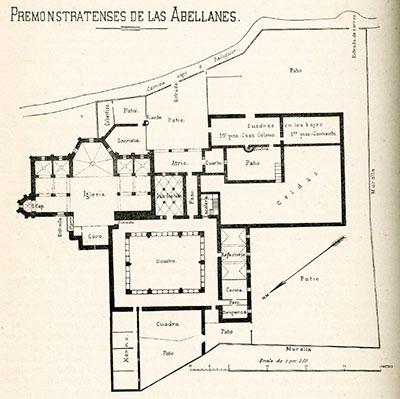
Plan of Les Avellanes
Published by Gaietà Barraquer in
Las casas de religiosos en Cataluña durante el
primer tercio del siglo XIX. Barcelona, 1906
The 13th century was marked by a period of maximum splendour, with a succession of donations increasing its patrimony. In this context, it is worth mentioning that in 1230, a year after the conquest of Mallorca, Jaume I gave the Premonstratensians of Les Avellanes some possessions in Artà as well as a church in Palma in gratitude for their order's support for the conquest. A community moved there and established the priory of Bellpuig d'Artà (Balearic Islands), where they were also in charge of the town's parish church. Probably due to the distance between the motherhouse and Artà and the lack of roots on the island, the priory was suppressed in 1425. At the beginning of the 14th century, major building work was undertaken at Les Avellanes, on the church and the cloister, which overlapped with a period of crisis and decadence that lasted throughout that century and the next.
The situation did not improve with the arrival of the regime of commendatory abbots, the first of whom held office in 1479. At the end of the 16th century the house was on the verge of disappearing, in this context, in 1592 the Augustinian canons had been secularised. In the last period, the monastery enjoyed a revival marked by a series of prestigious abbots who made Les Avellanes an important cultural and academic centre that extended beyond the monastery walls. These personalities included the abbots Daniel Finestres (1728-1733), brother of Jaume Finestres, monk and historian of Poblet, Jaume Caresmar (1754-1769, in two periods), scholar and author of various works, including the history of the monastery, and Jaume Pascual (1789-1792), a disciple of the former.
The 19th century was marked, as in the rest of the monastic communities, by a series of misfortunes and suppression: in 1810 and until 1813 the canons had to flee because of French occupation; after the time of the Liberal Triennium which again left Les Avellanes without a community between 1820 and 1824; and finally, in 1835 the house was suppressed and the monks had to flee, this time definitively. In 1840, the monastery was put up for sale and suffered the progressive loss of its movable property and patrimony. In 1906 it was acquired by the banker Agustí Santesmases, who sold the sarcophagi of Count Ermengol X, those of Count Àlvar I and his wife Cecília de Foix and Àlvar d'Urgell for 15,000 pesetas (the currency of Spain at that time). The pieces ended up in New York, at The Cloisters of the Metropolitan Museum of Art, where they are still preserved. The remains of the personalities were buried in Vilanova de la Sal and returned to Bellpuig in 1967.
In 1906, a 14th century statue of the Virgin, which at that time was venerated in the chapter house, was also sold. After passing through several hands, it was acquired by the Generalitat in 2011 and is now kept in the Museu de Lleida. In 1910, the Marist Brothers arrived and currently look after the place. In this last period, restoration and improvement works have been carried out on the buildings. On the other hand, in 2003 a part of the old archive of the monastery was discovered by chance, hidden in the false ceiling of the parish church of Vilanova de la Sal, now kept in the Arxiu Comarcal de la Noguera.
The monastery
The oldest part of the monastery complex is the cloister and the adjacent refectory. The cloister is rectangular in plan with eight semicircular arches on the shorter sides and eleven on the long sides. The vault is supported by double columns, in addition to pillars with four attached columns. The decoration of the capitals is plain in the middle and very simple in the rest, with a flat relief on most of them. It should be dated to the 12th century.
The chapter house dates from the 13th century, but it has been greatly modified. The construction of the church, which was to replace an earlier one, was promoted by Ermengol X, around 1303. It was left unfinished, with only the chancel and practically no nave. In the 20th century, the outbuildings were greatly improved, but the loss of some of the medieval elements that had been preserved until then, although in very poor condition, is to be regretted.
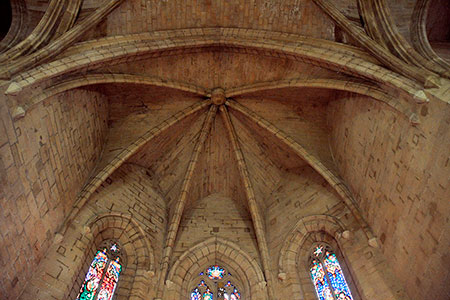
Vault of the church
The monastery of Bellpuig de les Avellanes was chosen by the Urgell dynasty as the burial place of the Counts of Urgell, until then other places had been chosen. Ermengol X had select the monastery of Poblet as his burial place, but he later changed his choice in favour of Bellpuig. In 1299 Àlvar d'Urgell, the Count's brother, died in Italy and his body was deposited in Bellpuig de les Avellanes, a fact that is documented. From then until the count's death (1314), work was carried out on a total of four tombs. There is controversy over the identification of some of the count's tombs, with different opinions.
In this case it does not bear the coat of arms, but an apostolate. This tomb has traditionally been identified as that of Ermengol VII, founder of the monastery.
Parents of Ermengol X. These are two superimposed sarcophagi: that of Álvar I, decorated with the arms of the Urgells, and that of Cecília de Foix, with the arms of her lineage. Historically, this tomb has been erroneously identified with that of Ermengol X and his wife Dolça.
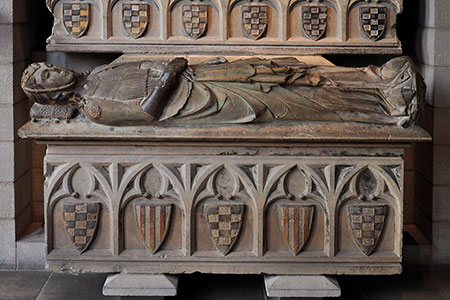
Tomb of Cecília de Foix
The Cloisters, New York
Image of the Virgin
The Museu de Lleida Diocesà i Comarcal holds a polychrome stone statue of the Virgin and Child from the monastery of Les Avellanes. It is a work attributed to Bartomeu de Robió, an artist documented between 1360 and 1380 in the city of Lleida, where he worked on the main altarpiece of the Seu Vella, now only partially preserved. The statue of the Virgin left the monastery because of the confiscation, in a similar way to what happened to the tombs of the counts, it was sold and passed into the hands of the American collector Charles Deering, who at that time had links with Sitges. For some fortunate reason, this is one of the collector's pieces that did not leave the country and after passing through several hands, in 1991 it was declared a Cultural Asset and was protected. Finally, in 2011, the work was acquired by the Generalitat de Catalunya and was deposited in the Museu de Lleida. The cleaning of the work has highlighted the rich polychrome of the statue, which is sumptuously dressed.
To the east of the monastic complex was a courtyard enclosed by a wall, now gone. At the time of Jaume Caresmar, a fountain was built against the wall to commemorate the introduction of water to the establishment.
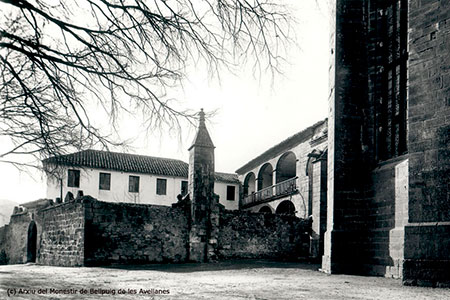
The courtyard wal in a photograph from 1921
Photo: Arxiu del Monestir de Bellpuig de les Avellanes (AMBA)
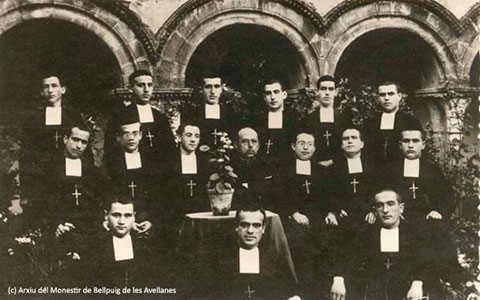
Marist Brothers in the cloister of the monastery
Assumption of the habit, 1921
Fhoto: Arxiu del Monestir de Bellpuig de les Avellanes (AMBA)
- ADELL, Joan-Albert; Freixas, Pere (2002). Les cases dels altres ordes monàstics i canonicals. L’art gòtic a Catalunya. Arquitectura I. Barcelona: Enciclopèdia Catalana
- BACKMUND, Norberto (1956). Monasticon Praemonstratense. Vol. III. Straubing
- BARRAQUER I ROVIRALTA, Gaietà (1906). Las casas de religiosos en Cataluña durante el primer tercio del siglo XIX. Vol. 1. Barcelona: F. J. Altés
- CAMÓS, Narciso (1657). Jardín de Maria plantado en el Principado de Cataluña. Barcelona: Plantada
- CARESMAR, Jaime (1977). Historia de Santa Maria de Bellpuig de las Avellanas. Balaguer: Romeu
- CATALÀ, Pere (1979). Apunt sobre el monestir de Bellpuig de les Avellanes. Els castells catalans. Vol. VI-1a part. Barcelona: R. Dalmau Ed.
- CORREDERA, Eduardo (1963-64). Los condes soberanos de Urgel y los premonstratenses. Analecta sacra tarraconensia, vol. 36. Barcelona: Balmesiana
- CORREDERA, Eduardo (1971). Santa María de Bellpuig de las Avellanas y los condes de Urgel. Ilerda, núm. 31. Lleida: Instituto de Estudios Ilerdenses
- CORREDERA, Eduardo (1994). Santa Maria de Bellpuig de les Avellanes. Catalunya romànica. Vol. XVII. La Noguera. Barcelona: Enciclopèdia Catalana
- CORREDERA, Eduardo (1997). Santa Maria de Bellpuig de les Avellanes. Institut de Germans Maristes
- ESPAÑOL, Francesca (2007). El panteó dels comtes d’Urgell al monestir de Bellpuig de les Avellanes. L'art gòtic a Catalunya. Escultura I. Barcelona: Enciclopèdia Catalana
- GAVÍN, Josep M. (1982). Inventari d'esglésies. Vol. 12 Noguera. Barcelona: Arxiu Gavín
- GONZALVO I BOU, Gener (2007). Història del panteó dels comtes d'Urgell. Lleida: Universitat de Lleida
- LÓPEZ DE GUEREÑO, María Teresa i altres (2019). De Bellpuig a Bellpuig. Els premonstratesos, de les Avellanes a Artà. Consell de Mallorca
- MORAL BARRIO, Joan Jesús (2004). Santa Maria de Bellpuig de les Avellanes. Una història que es renova. Edilesa, Lleó
- PLEYÁN DE PORTA, José (1880). Monastir de las Avellanas. Album histórich, pintoresch y monumental de Lleyda y sa provincia. Lleida: J. Sol
- PORTA I ROIGÉ, Robert (2016). La llama espiritual de un monasterio con historia. Catalunya Cristiana. Núm. 1896
- SANAHUJA, Pere (reed. 2002). Història de la ciutat de Balaguer. Lleida: Pagès Ed.
- SERRA LLANSANA, Lluís (2011). La força de la fraternitat. Maristes, cent anys a les Avellanes (1910-2010). A. Amics del Monestir de les Avellanes
- SERRATE, Antonio (cop. ) (1902). Carta fundationis Monasterii Bellipodiensis an. MCLXVI. Revista de la Asociación-Artístico-Arqueológica-Barcelonesa. Vol. 3. 1901-1902. Barcelona: Vives
- SOLÉ, Ramon (2012). La Mare de Déu del monestir de Santa Maria de Bellpuig de les Avellanes. Rescat núm. 20
- VELASCO GONZÁLEZ, Alberto; FITÉ I LLEVOT, Francesc (2014-16). El comte Pere II d'Urgell i les arts. Lambard: Estudis d'art medieval, núm. 26
- VELASCO GONZÁLEZ, Alberto; YEGUAS GASSÓ, Joan (2011). Intel·lectualitat i encàrrecs artístics al segle XVIII: els erudits de Santa Maria de Bellpuig de les Avellanes. Urtx: revista cultural de l’Urgell, núm. 25
- VILLANUEVA. Jaime (1850). Viage literario a las iglesias de España. Tomo XII. Viage á Urgel y á Gerona. Madrid: Real Academia de la Historia
- Link ↗ : Monestir de les Avellanes
